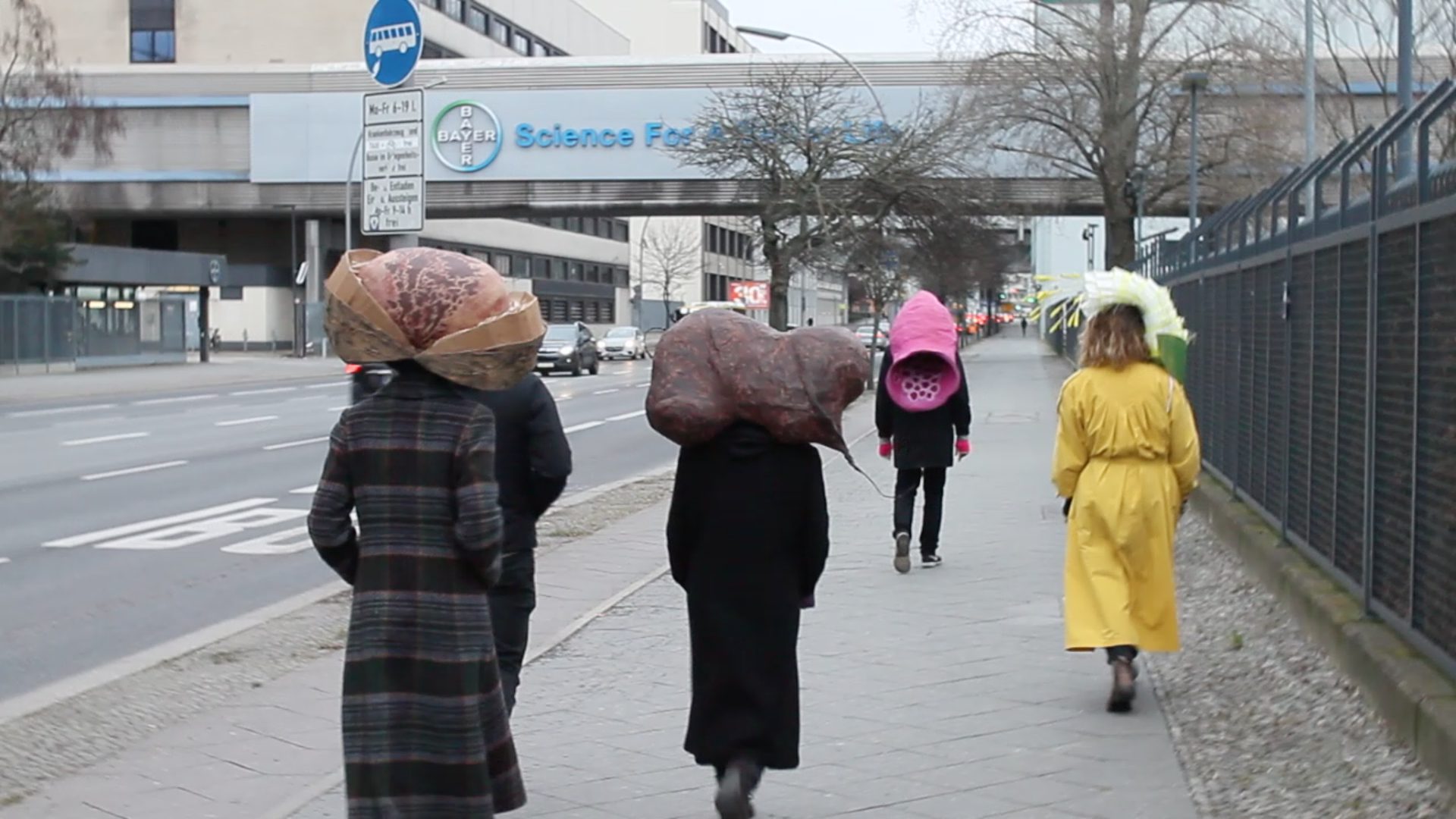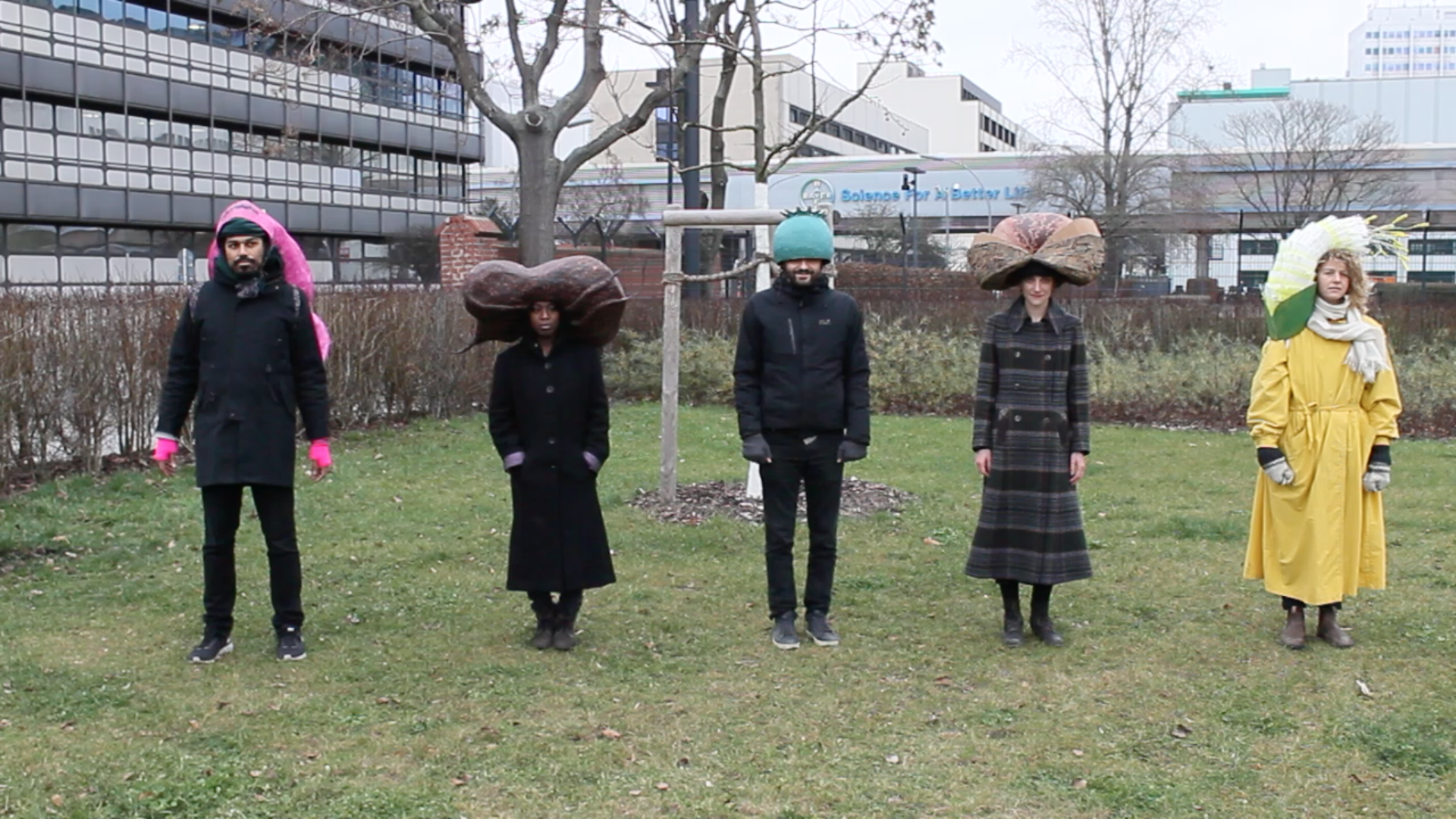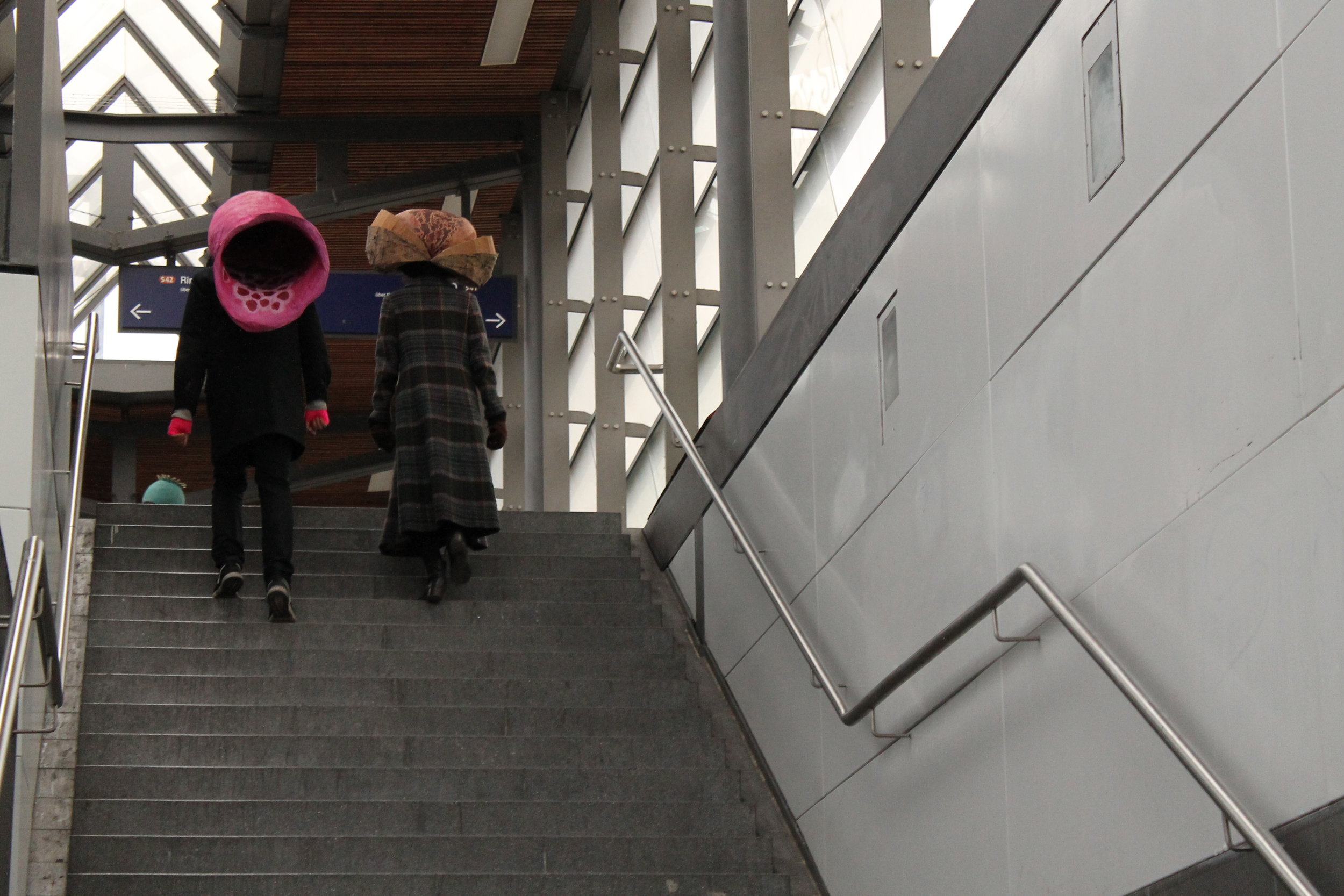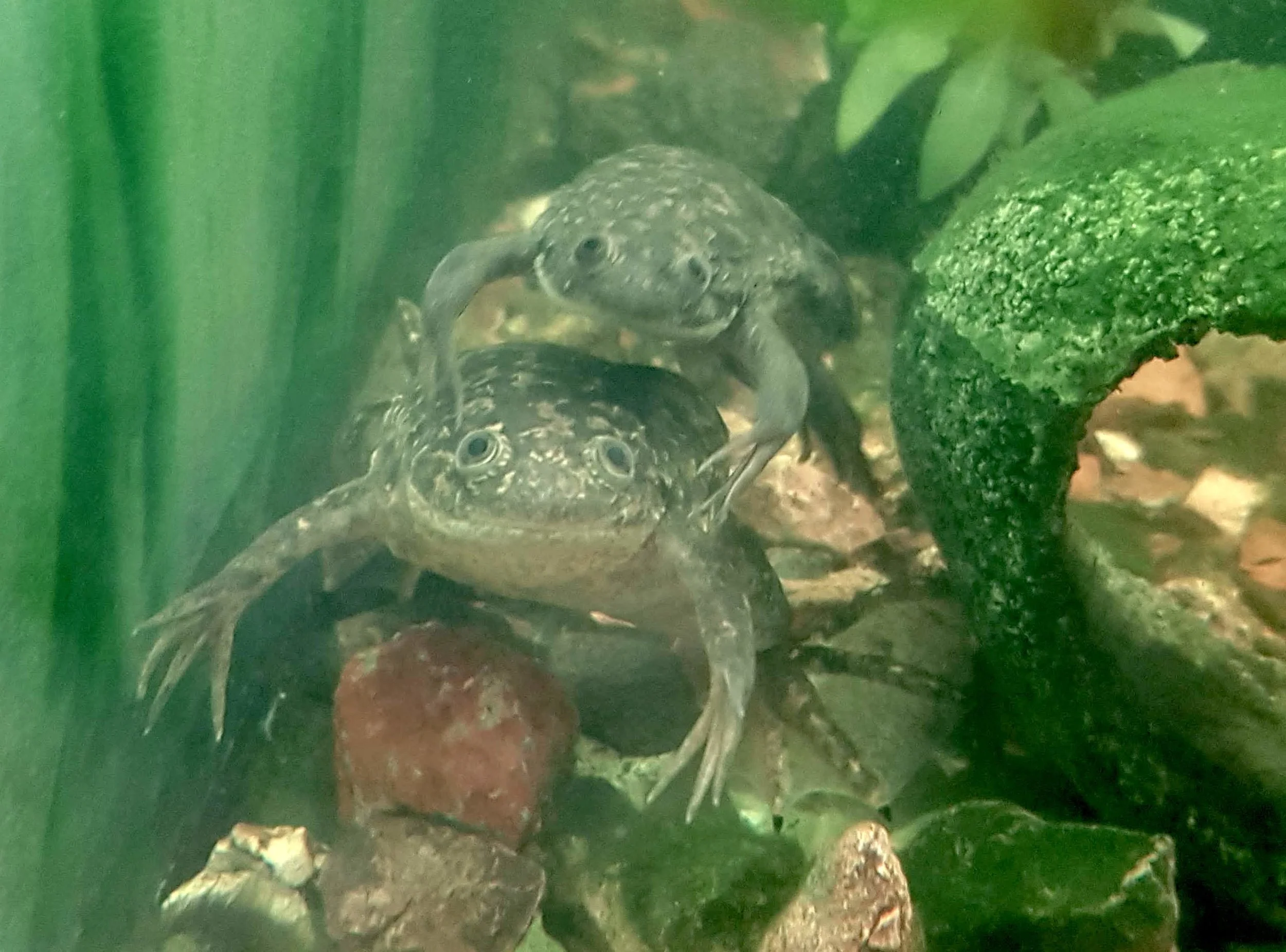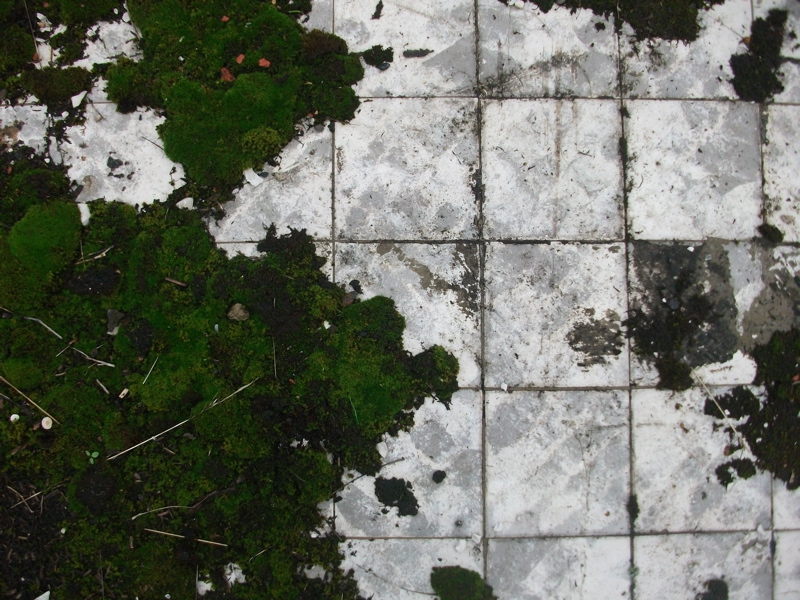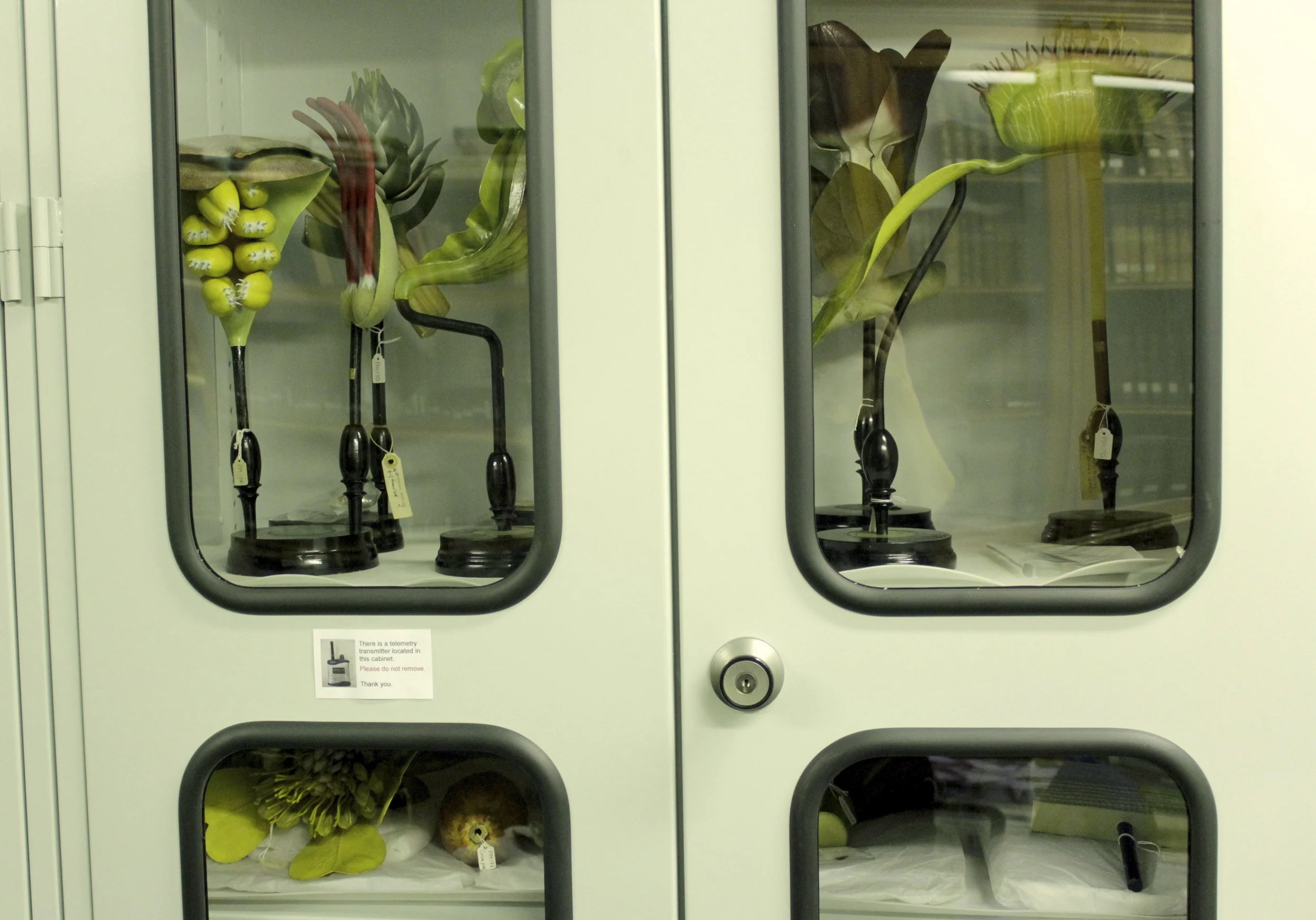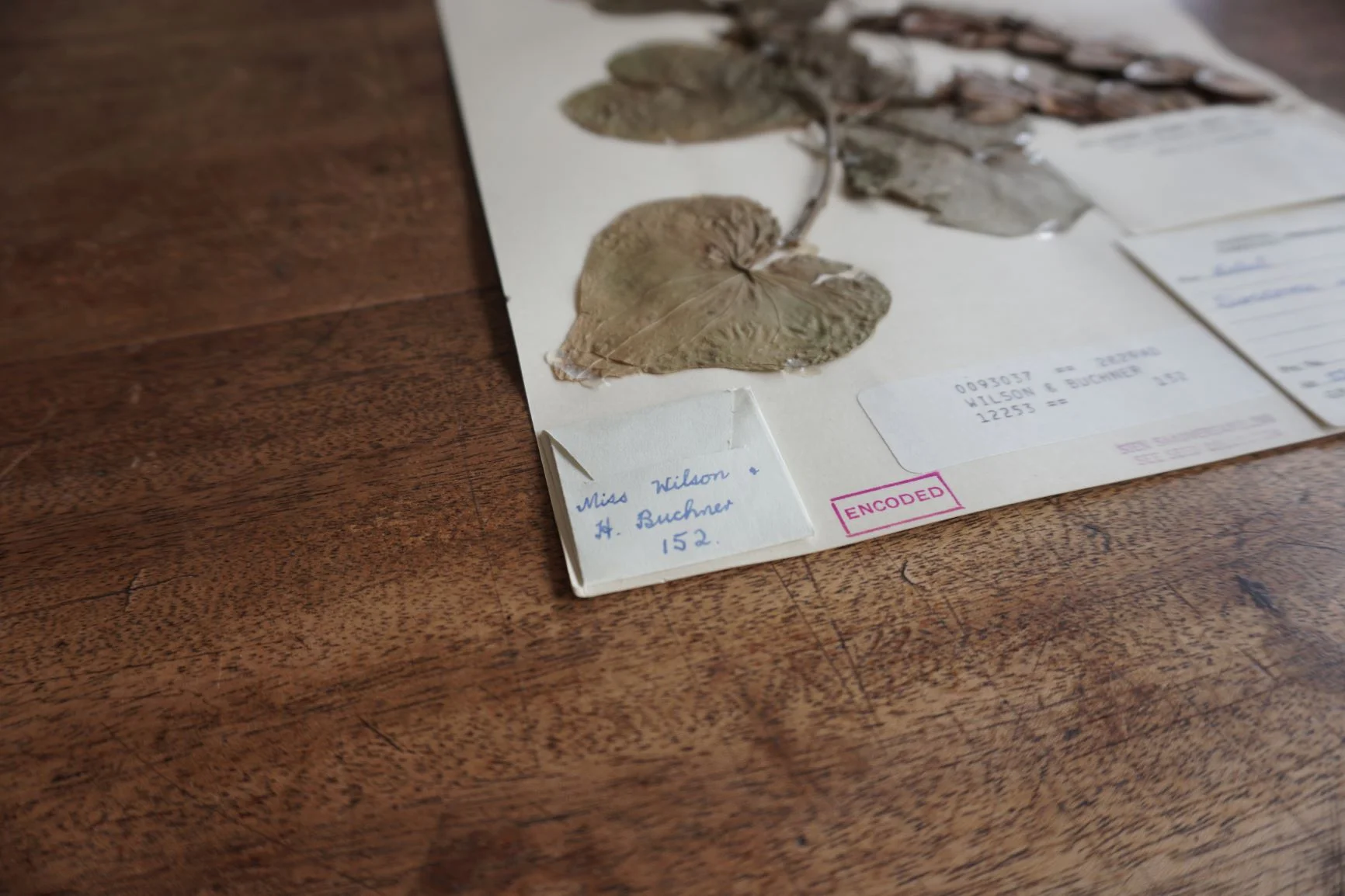
Urban Antibodies
The hot pink bell swoops down their back, a large carnivorous mouth like a second face. It matches their pink mits. A precise, didactic 19th century botanical model blown up to cartoonish proportions. A body extension, grotesque and sexy. Green porno meets the backstage of the museum meets The Dispossessed.
Urban Antibodies is a long-term research project that imagines the city as a living organism, looking at sites of toxicity and vulnerability, healing and care – with a focus on plant knowledge and medicine. The project explores specific sites to investigate histories of industrial pharmaceutical companies in relation to plant knowledge, colonialism, and the role of gender in the development of scientific knowledge.
The project comes out of research on the development of pharmaceutical drugs based on plants, and sites connected to the collection, categorisation and processing of plant material and medicine. Alongside research, I’ve hosted participatory workshops to share stories – from home remedies and healing practices, to the exploration and import of ‘exotic’ plants through the era of European colonialism, the violence of collecting and the development of botany as a discipline.
During a residency at ZK/U Berlin in 2017, I made wearable sculptures based on magnified medicinal plants, riffing on 19th Century papier-mâché botanical models. I am developing new performance work based on the research for public sites with pharmaceutical histories.
The Urban Antibodies research & development period was supported through a grant from Arts Council England. In 2018 Rebecca was been awarded a Wellcome Research Bursary for archival research to develop the project further.
Research
This article, co-authored with William Beinart, has recently been published in the South African Historical Journal. Contact me for more information and a copy of the full article.
What do I know about hormones? They're a familiar part of everyday life. They affect my emotions, sleep patterns, stress levels, desire, sexual and reproductive cycles, experience of aging, immune system and more…
Hormones are substances that connect: agents of communication within our bodies, and also secretions that travel across different bodies and ecosystems. The development of hormonal medicine – endocrinology – connects horses, pigs, slaughterhouses, glands, piss, prisons, soya beans, frogs, yams, sisal, Puerto Rican and American women, exploitation and liberation through networks of research and extraction for the medical-industrial complex…
In January I traveled to South Africa on a research trip with my dad, William Beinart, following the story of a wild yam. Through this trip we are learning more about Dioscorea sylvatica, a wild yam known as 'Elephant's Foot' or 'ingwevu' in Zulu, that was heavily exploited by the British firm Boots for the production of cortisone in the 1950s – a story I've been digging into for over a year.
I've walked across the Island many times, following desire lines that criss-crossed the wasteland, noticing the abundant weeds and wildflowers that occupied the site. These common medicinal plants grew on the footprint of what was once a large pharmaceutical site in the heart of Nottingham – the century-long home of Boots, trusted chemist and household name. In one corner, a tiled floor was still visible: the remains of a factory where workers had industriously processed, packed and distributed medicines to the world. These physical traces of the site’s history have recently disappeared under a car park, and after nearly three decades as an unofficial urban commons the whole area is earmarked for a massive redevelopment scheme. But I keep returning to the Island and the questions it seeded in me.
I grew up with historians – great believers in keeping things, because you never know when they could become key to telling a story. But these historians also spent most of their professional lives talking to people. Oral histories, unwritten narratives, and lived experience weave stories along with – and contradictory to – records kept in shelves, boxes and hard-drives…
In the past months I've spent time in medical archives and museums, accessing collections of images, artefacts, documents and objects, sifting for stories, making unexpected connections. I have been thinking a lot about how these things came to be here, what has been preserved, what's missing, and how particular narratives and realms of knowledge are constructed and reproduced by the value systems of dominant cultures.
I have been (deliberately) unmethodical in my research, following my nose, promiscuous with my attentions. I have started searches beginning with a particular plant, or drug, and allowed this to take me into exploded narratives of bodies, pharma-colonialism, identity, politics, hormones, piss, scientific innovation, belief, witches, extraction, exploitation, testing, failing, poisons and cures, magic bullets, not-knowing, bio-prospecting, life-saving, life-ending...
In 2017 I undertook a two-part residency at ZK/U Centre for Art and Urbanistics (Berlin) to develop the ‘Urban Antibodies’ project. Urban Antibodies is a long-term research project that imagines the city as a living organism, looking at sites of toxicity and vulnerability, healing and care – with a focus on plant knowledge and medicine. The project explores specific sites to investigate histories of industrial pharmaceutical companies in relation to plant knowledge, colonialism, and gender in the development of scientific knowledge.
EVENTS
This event forms part of Arts Catalyt’s Recentring Attention programme.
What do we mean by reproductive rights and reproductive (in)justice? Why and how has knowledge around reproductive health changed through different points in history and across different geographies? Join this workshop to collectively explore issues around reproduction from social, ecological and historical perspectives.
Join us for a hands-on workshop to uncover this story and its connection to indigenous knowledge, colonial plant-hunting, pharmaceutical drugs, and conservation, and explore recipes and records from the archive.
Join artist Rebecca Beinart and herbalist Rasheeqa Ahmad to make a collaborative collage of plants historically used for birth control and hormonal health. As we create this visual map we'll discuss how this knowledge travelled across different geographies and why it was shared or suppressed at different points in history.
In the 1950s, the Wellcome Foundation was still cultivating Ergot – a parasitic fungus – for use in making pharmaceutical drugs. The story of this fungus connects fascinating themes including the edge between poison and medicine; witchcraft; midwifery, gendered knowledge and reproductive rights. During this workshop, participants will have the opportunity to work with visual material from the archive, and create models based on the parasitic fungus. Whilst making together we will explore the themes brought up by the story of ergot.
A performative evening of discussion with: Luiza Prado, Edna Bonhomme, Rebecca Beinart, Tereza Silon and others, accompanied by shared food made with medicinal plants.
Join Rebecca Beinart for a drop-in workshop to sift through images and get intimate with the Elephant's Foot Yam. We will make drawings of the plant from dried samples, herbarium copies and a rich array of archival material. Whilst we draw we will piece together the story of the wild yam, indigenous uses and knowledge, colonial plant-hunting and taxonomy, its use in pharmaceutical drug manufacture, and issues around contemporary conservation.
This workshop will delve into the development of Cortisone in the 1950s, when Boots established a purpose-built factory in Beeston to produce the drug from Elephants Foot, a South African yam. During these early years of steroid drug development, Cortisone was hailed as a miracle cure. During the workshop we’ll cook and eat yam together and trace the story of Boots bioprospecting for steroid-rich plants in South Africa, and the impact of Cortisone on the development of medicine.
A workshop to make your own tonic water using Cinchona bark, the quinine-rich plant that gives tonic its bitter flavour. We’ll try out recipes together, share a gin and tonic, and trace the story of quinine. Originally utilised by the indigenous Quechua people of South America, the bark of the Cinchona tree connects the invasion of these lands to expanding European colonialism, disease, biopiracy and pharmaceuticals.
